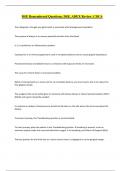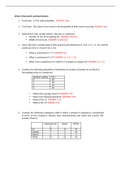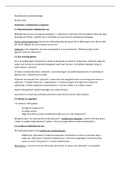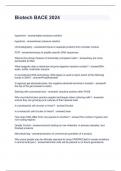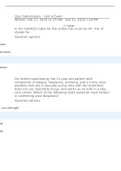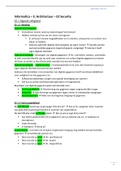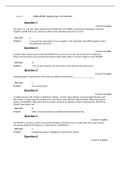Exam (elaborations)
DSE Remembered Questions, DSE, ADEX Review, CDCA
- Course
- Institution
DSE Remembered Questions, DSE, ADEX Review, CDCA The radiograph I thought was ghost teeth is associated with Amelogenesis Imperfecta. The purpose of dialysis is to remove potential toxicities from the blood. IL-1 is classified as an inflammatory cytokine. Cyclosporine is an immunosuppress...
[Show more]
